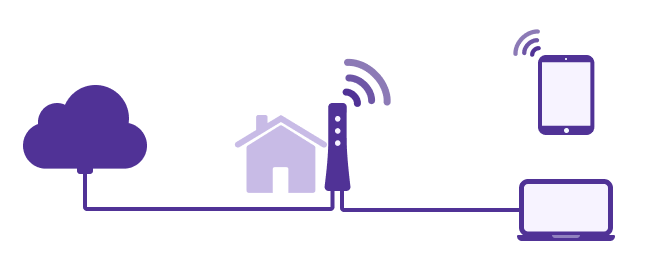How plan speed is different from device speed
The speed to a device will almost always be lower than the speed to the home, especially with the high speeds of fiber service.
If you've done a speed test and been alarmed that the results were lower than your total plan speed, don't worry. It's normal. Here's why.
Speed to the home is usually faster than speed to devices

The speed you get to your modem or SmartNID should be your total plan speed. For example, if you have a 940 Mbps plan, that should be close to the speed you see if you test your speed to the modem or SmartNID using the Quantum Fiber app.
As that signal gets distributed throughout your space over WiFi, it will get slower. How much it slows depends on a few things.
Speed slower with more devices

The more devices you have connected to your WiFi, the slower the speed to each device.
With a high bandwidth plan like 940 Mbps, you start with so much speed that even if you see 200 Mbps on a device, that should be plenty fast for most common activities.
Every device has a maximum speed

All devices have maximum speed capabilities. So lower speeds could be due to your device rather than any problem with your service.
Older devices simply weren't built for the high speeds fiber can provide. If you have devices that are more than a few years old, their top speed may be only 100-150 Mbps.
Newer devices may max out at 200 to 300 Mbps. Each one is different, so if you aren't sure, check the specifications for your individual device.
This content is provided for informational purposes only and may require additional research and substantiation by the end user. In addition, the information is provided “as is” without any warranty or condition of any kind, either express or implied. Use of this information is at the end user’s own risk. All third-party company and product or service names referenced in this article are for identification purposes only and do not imply endorsement or affiliation with Quantum Fiber. This document represents Quantum Fiber’s products and offerings as of the date of issue. Services not available everywhere. Quantum Fiber may change or cancel products and services or substitute similar products and services at its sole discretion without notice. ©2024 Q Fiber, LLC. All Rights Reserved. Quantum, Quantum Fiber and Quantum Fiber Internet are trademarks of Quantum Wireless LLC and used under license to Q Fiber, LLC.
Was this information helpful?








